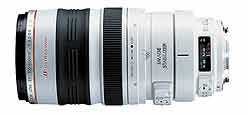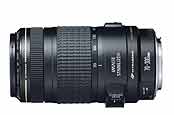Contact Details: Scotch Macaskill, Dirt Road Traders, Currys Post Road, Howick, KwaZulu-Natal, South Africa. Tel: +27 (0)82 578 2329. Privacy: Your privacy is guaranteed. See our Privacy Policy for more. This site accepts advertising and other forms of compensation - see Disclosure and Advertising for details. Site updated: 2022. Copyright © 2002 - 2022 Scotch Macaskill

| ||||||||||
|
||||||||||
|
See Also: |
Canon SLR Lenses

Canon SLR lenses are inter-changeable -- they can be removed from the camera body and replaced with another. Earlier Canon SLR lenses (pre-1987) were fitted with a mechanical lens mount and carried the designation "FD". These lenses were made for Canon's older 35mm SLR (single lens reflex) film cameras like the highly-rated Canon AE-1 and Canon A-1 bodies. The FD lenses were replaced in 1987 with EF (electro focus) lenses fitted with electronic mounts, allowing seamless integration with the camera's electronic shutter and metering system. The EF designation remains in use today and these lenses can be used with any of the following Canon SLR cameras:
Canon also manufacture a range of SLR lenses made specifically for its cameras with the smaller APS-C sensors. The image cast by an EF lens fills a 36 x 24mm rectangle, which is the size of a normal 35mm negative or full-frame sensor. When the same lens is fitted to a camera with a smaller, 22.5 x 15mm APS-C sensor, the image fills more of the rectangle. The effect in the viewfinder, and on the sensor, is like using a 1.6x teleconverter, or 60% longer lens. This causes wide angle lenses to lose their impact, making them more like standard lenses, e.g. a 28mm lens x 1.6 = 44.8mm.
More Wide Angle ChoiceTo provide photographers using digital SLRs with APS-C sized sensors with more wide angle choice, Canon developed a new EF-S mount and range of matching EF-S lenses. While EF lenses can be used on all Canon's digital SLR bodies, the EF-S lenses are designed exclusively for use on cameras with the smaller sensor. You cannot, for example, use a Canon EF-S 18-55mm zoom lens on a full-frame Canon 5D or 1Ds camera. Canon's huge range of SLR lenses (more than 60, from fish-eye to super telephoto) can also be categorized into:
Zoom lenses, because of their incredible versatility and value for money, are the first choice for most photographers, particularly amateurs. Instead of carrying a bag full of prime lenses, a photographer can carry two zoom lenses that cover from wide angle to telephoto, e.g. Canon EF 24-70mm f/2.8L USM plus Canon EF 70-200mm f/2.8L IS USM or, in the case of EF-S lenses, the Canon EF-S 18-55mm zoom plus Canon EF-S 55-250mm f/4-5.6 IS zoom (equivalent focal length on a 35mm camera of both lenses is 28 to 400mm!). Advances in lens technology have also seen great strides in the image quality provided by zoom lenses which, in some cases, is nearly the equal of that provided by prime lenses. Professional photographers nevertheless still opt for prime lenses where possible, mainly because of their faster maximum aperture, allowing use in low light. No zoom lens of similar focal length can equal the f/2.8 aperture of Canon's EF 400mm f/2.8L IS USM or the EF 600mm IS USM lens's f/4 maximum aperture. Similarly, Canon's prime wide angle and standard (50mm) lenses offer unrivalled image quality at wide maximum apertures. L-Series LensesCanon's top-of-the-range SLR lenses carry the "L" designation and are distinguishable by the red circle around the lens barrel. These professional lenses offer the ultimate in image quality, with protection against weather and aging and include special optical materials such as fluorite, ultra-dispersion (UD) or super UD elements. Other Canon SLR lens codes include the following:
Return to Canon Lens Reports |
|||||||||
|
|
||||||||||